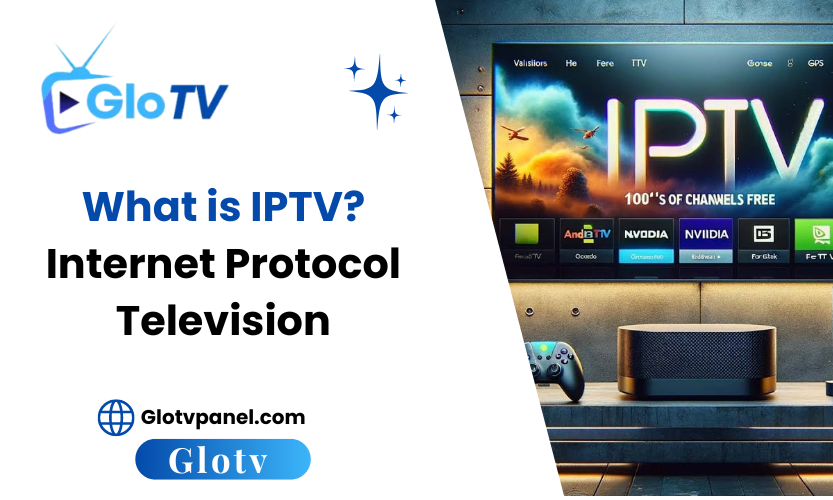What is IPTV? IPTV allows users to stream television content over the internet. Learn how IPTV works, its uses, benefits, and comparison to cable TV in this complete guide.
1. Introduction to IPTV
Internet Protocol Television (IPTV) is a service that provides television programming and other video content using the Transmission Control Protocol/Internet Protocol (TCP/IP) suite. Unlike traditional broadcast TV, cable TV, or satellite signals, IPTV delivers content over IP networks.
IPTV primarily uses IP multicasting with Internet Group Management Protocol for live television broadcasts and Real-Time Streaming Protocol for on-demand programs. IPTV can be bundled with other IP-based telecommunication services, such as voice-over IP and high-speed internet.
Like cable television, IPTV requires a set-top box or other customer premises devices to decode the IP signals and display the content on a TV screen.
2. How IPTV Works
IPTV delivers media content, videos, or live television over an IP network. It can use the public internet, a private local area network (LAN), or wide area network (WAN).
An IPTV service provider encodes TV channels and streams them over an IP network to the user’s device. This device could be an IP-enabled TV, mobile phone, tablet, laptop, or PC.
IPTV allows users to watch TV content over the internet using IP networks. Compatible devices like smart TVs, smartphones, or IPTV set-top boxes receive encoded IP signals from the IPTV provider. They then decode these signals and convert them into audio/video formats that can be displayed.
3. Types of IPTV Services
There are various types of IPTV services:
· Subscription IPTV – Paid monthly subscriptions for access to live TV channels and on-demand libraries.
· Free IPTV – Limited channels offered for free, often supported by ads.
· Live TV – Channels streamed live in real-time using IP multicasting.
· Video On Demand (VOD) – Library of on-demand movies and shows delivered on request.
· Time-Shifted IPTV – Start-over or catch-up features for watching missed shows.
· Hybrid IPTV – Combination of traditional broadcast TV with IPTV on-demand.
4. Uses of IPTV
IPTV is used to deliver TV programs and videos that are either live or available on-demand. It can be accessed through apps, web portals, and set-top boxes provided by ISPs.
IPTV services work with various devices including smart TVs, computers, smartphones, tablets, and more. Some providers also offer their proprietary set-top boxes.
Additionally, IPTV can be used by businesses to launch their own IPTV service with features like live channels, VOD libraries, catch-up TV, cloud DVR, etc.
5. Benefits of IPTV
Compared to traditional cable or satellite TV, some key benefits of IPTV include:
· Lower Cost – IPTV providers often offer cheaper subscription plans than traditional TV. Some services are even free but limited.
· Flexibility – Users can watch shows on-demand at their convenience, instead of at scheduled times.
· Accessibility – IPTV can be viewed on multiple compatible devices like phones, tablets, laptops, etc.
· Diverse Content – An IPTV connection provides access to many niche live channels and libraries not on regular TV.
· Interactivity – Features like catch-up TV, start-over, and cloud DVR.
· Ad Insertion – On-demand content can have targeted video ads, creating an additional revenue stream.
6. Comparison to Cable TV
While Cable TV uses traditional terrestrial, satellite, and cable transmission formats, IPTV delivers television over Internet Protocol (IP) networks.
IPTV also offers video-on-demand services for watching or replaying content anytime, unlike Cable TV’s linear unicast delivery of scheduled programming.
7. How to Get Started with IPTV
To get started with IPTV, users typically need:
·!– /wp:paragraph –>
· An internet plan with sufficient speed – at least 10 Mbps for HD and 25 Mbps for 4K content.
· An account with an IPTV provider available in your country. Compare services, channel listings, and costs.
· If required, a VPN subscription to bypass geo-restrictions and access global content. Confirm VPN compatibility with your shortlisted IPTV provider.
Once you have the equipment and account, install the app or set-top box to start watching IPTV.
8. Future of IPTV
The IPTV market is predicted to proliferate in the coming years. According to ResearchAndMarkets.com, the global IPTV market is projected to reach $120 billion by 2027.
Some future trends include:
· Increased adoption by telecom and cable companies rolling out IPTV offerings.
· Higher video quality and more streaming options driven by 5G networks and new compression codecs.
· Tighter integration of IPTV with smart home devices and virtual assistants.
· More advanced interactive features and TV apps over IPTV platforms.
9. Common Issues and Troubleshooting
Some common IPTV issues faced by users include:
· Buffering – Caused by slow internet speeds. Upgrade your broadband plan.
· Freezing/Lagging – Usually due to network congestion. Try an ethernet connection for stability.
· Black Screens – This could be a decoding error. Update the app/firmware or try a different device.
· Guide/Menu Problems – Indicates an app fault. Uninstall and reinstall the latest app version.
· Geo-blocking – Use a VPN to access content restricted in your region.
If issues persist, contact your IPTV provider’s customer support for troubleshooting assistance. Proactively test different channels and devices to identify any problems.
10. Conclusion
In summary, IPTV leverages IP networking and streaming technologies to deliver flexible and cost-effective live TV and on-demand services. It offers key benefits over traditional cable or satellite television. With careful setup and troubleshooting, IPTV provides a smooth viewing experience across different devices. As network infrastructure and compression algorithms improve, IPTV is poised to eventually supersede legacy formats to become the future of television broadcasting.





